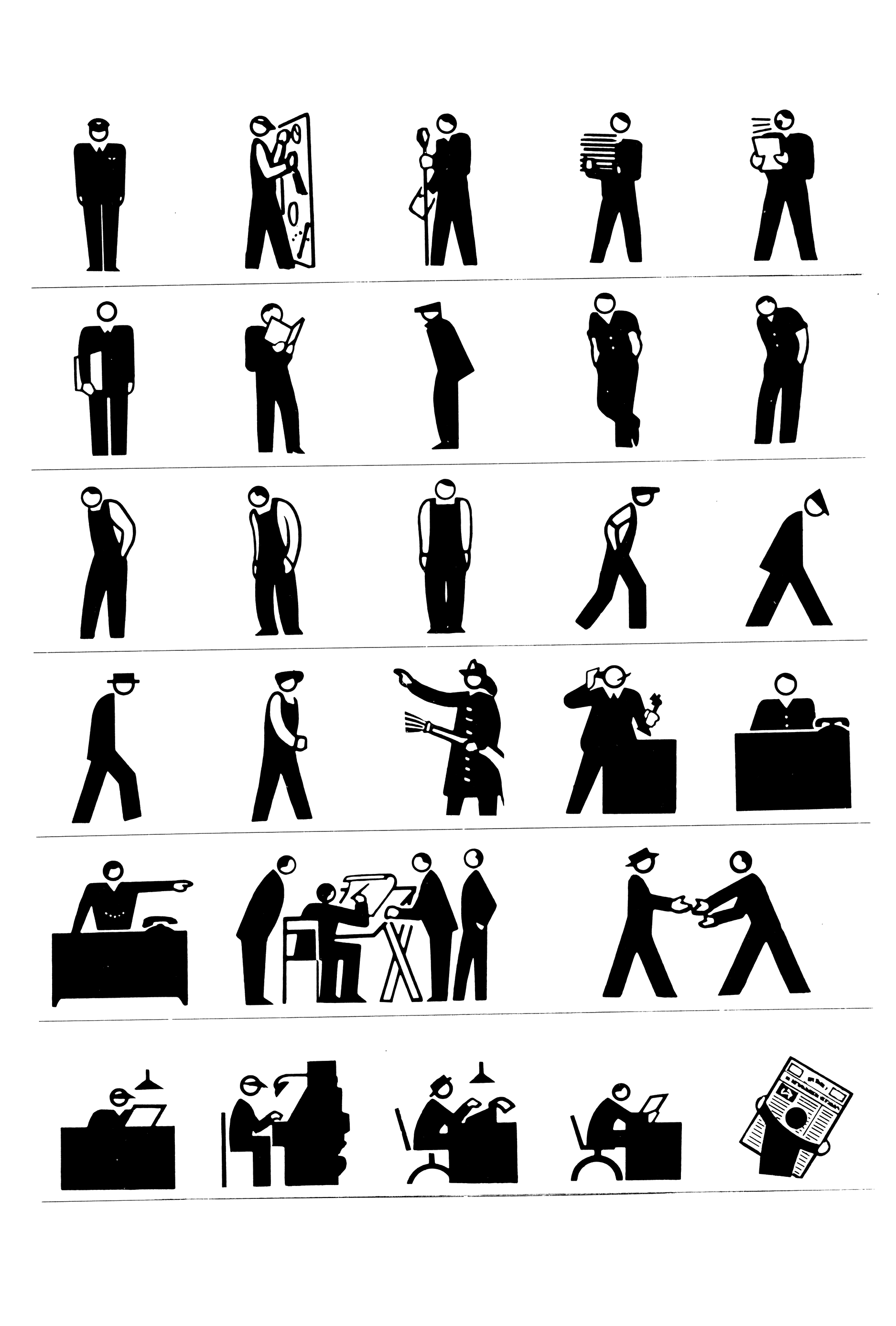This write-up keeps the original tone of the collaborative collection; which was essentially a solicitation for participation.
Overview
This collection harkens back to the 1930s pictographic style, when icons were drawn as a type of early documentary photograph – descriptive of everyday actions, but more suitable for reproduction with the coarses printing presses of the era. This realistic (but not without humor, voice or wit) type of drawing is visible in Rudolf Modley and Gerd Arntz’s archive (see figure 1). We can get a sense of the culture by seeing a slightly simplified version of the hair, clothes, mannerisms and industrial objects of the time.

This Noun Project collaborative collection asks designers – wherever in the world you may be – to help build a collection that documents people doing what they do today – whether funny, awkward, honorable or mundane. What I hope to see is a snapshot of contemporary global culture using a timeless pictographic style.
Think of them as documentary icons, akin to the small format photographs taken in the subsequent era Henri Cartier-Bresson, Robert Frank, Diane Arbus, and Lee Friedlander.
Process
- Use a smart phone to capture someone performing an activity you would like to document and share with others. Consider the angle from which you take the photo, since you’ll be drawing over the photograph. Be sure to capture the full human figure. Look for details that make your moment unique. You may want to take more than one picture to capture certain elements at the correct angle. Smartphone cameras use a wide angle lens, so leave room around subjects as well.
- Place your photograph into your drawing program of choice and reduce it so the person’s total height would be 100px if standing up.

- Lock the photograph and draw over the person using an outline stroke (so you can see what you’re drawing over). Use only as much detail as you need, but enough to capture the activity. Removing detail later is fairly easy. Use the photograph as your guide, but vary from it if the drawing doesn’t read so well.

- Convert your outline to a black fill and see if the icon is clear enough. Simplify the human head to a more generic blob, keeping hair or eyeglasses if desirable. Show human skin or contrasting element with a white fill and a 1pt black stroke. Smoother edges allow the icon to scale more easily. I recommend using rounded rectangles, circles and lines with rounded edges to help soften your drawing without overusing the pen tool.
- Be sure to outline your strokes and combine shapes before saving to SVG.
Submit!
See the icons, learn more and submit to the collection at The Noun Project.

